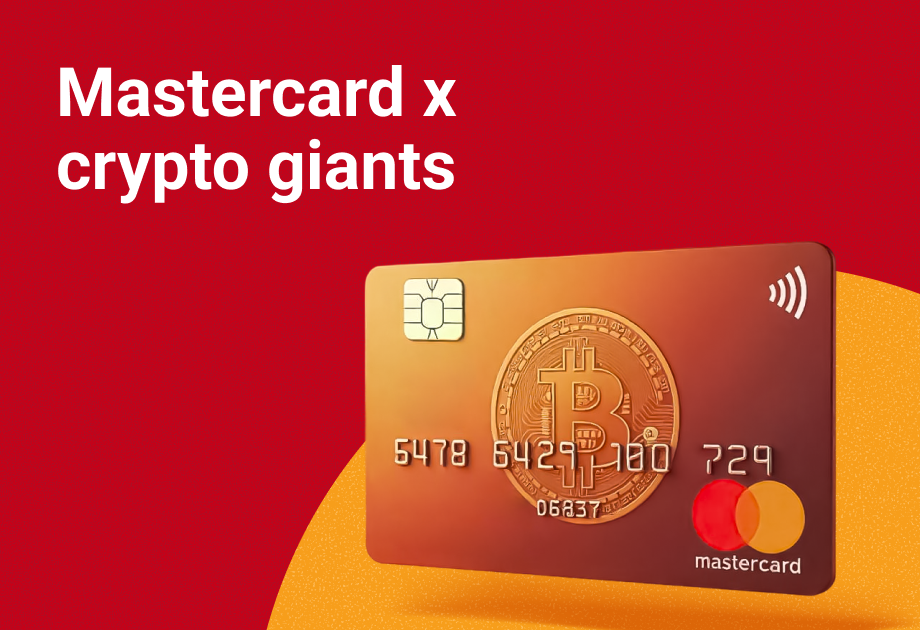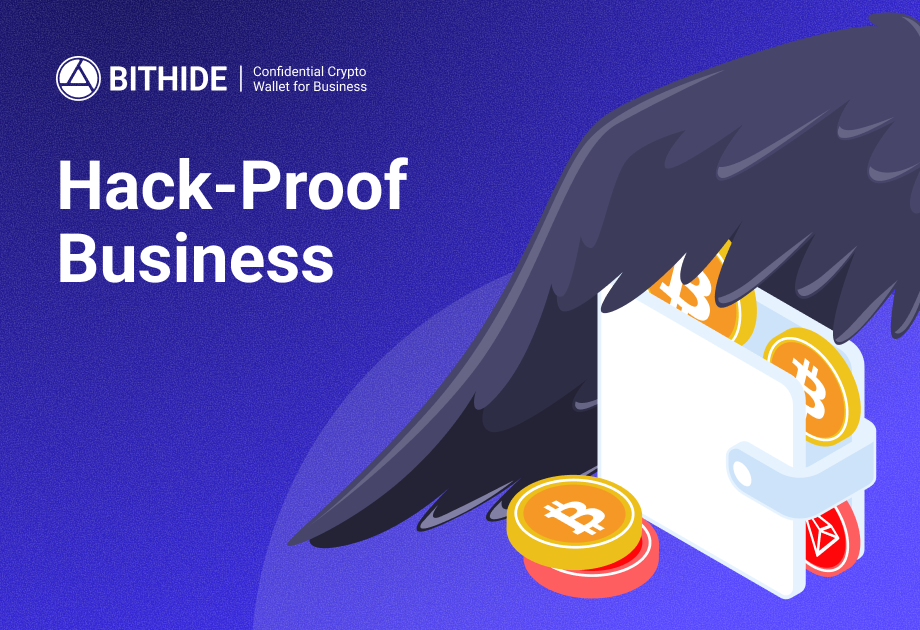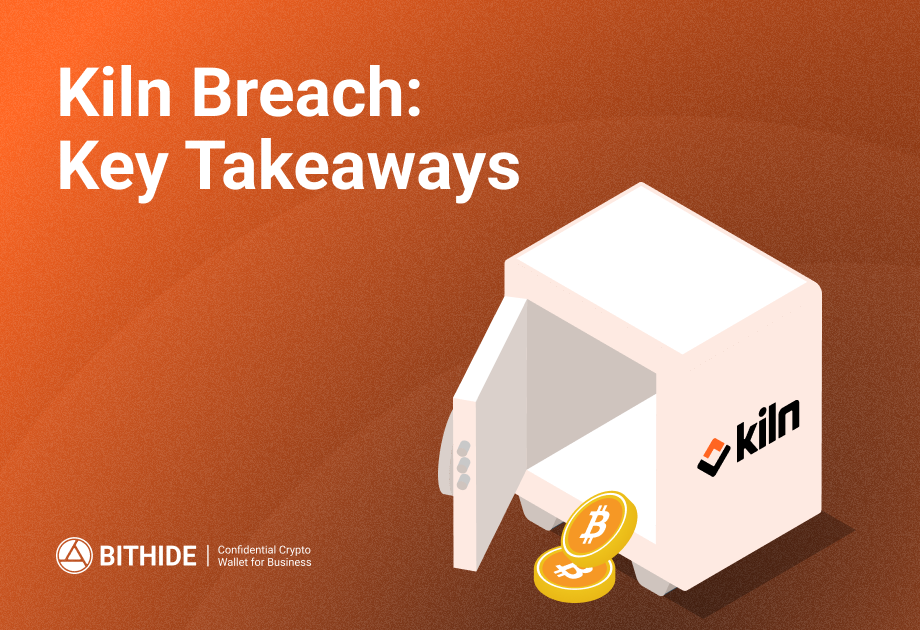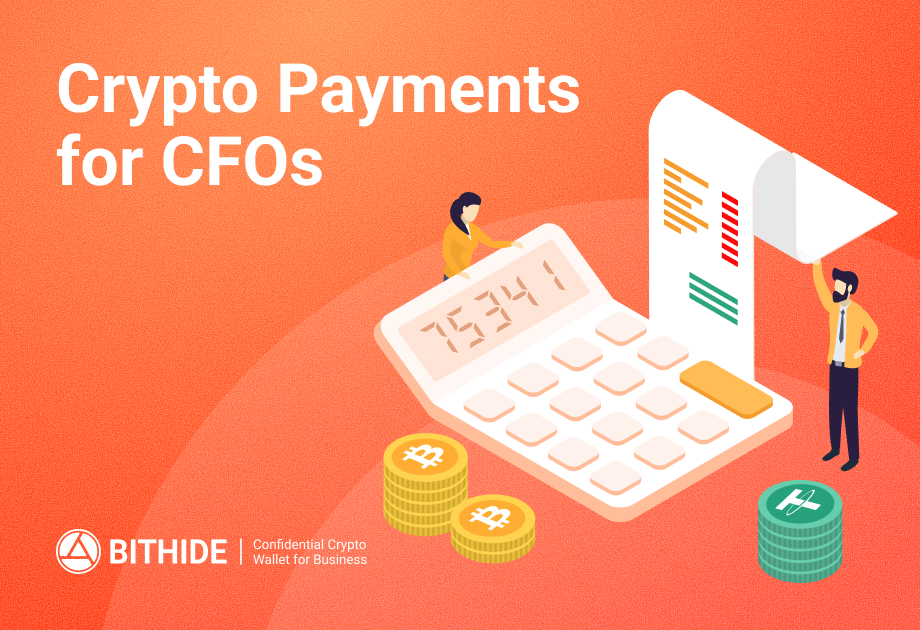Mastercard’s Crypto Payments: Partnerships with OKX, MoonPay and Kraken
How Mastercard is expanding its crypto ecosystem and what it means for businesses worldwide.

The total volume of stablecoin transactions in 2024 reached $27.6 trillion. That’s nearly 8% more than was transferred through traditional payment tools like Visa and Mastercard. The latter didn’t ignore the growing popularity of stablecoins and launched payments in USDC and USDP.
This article explores news on Mastercard collaborations with OKX, MoonPay and Kraken, and what it means for businesses worldwide.
Mastercard: Launching Payments in USDC and USDP
The adoption of stablecoins marks a major step towards the mass adoption of cryptocurrencies and highlights growing digital currency adoption. Now, any customer at any of Mastercard’s 150 million merchants can use cryptocurrency to pay for goods and services. Transactions are settled on Ethereum and Solana blockchains, and merchants can choose to receive payments either in stablecoins or fiat.
One key milestone was Mastercard’s partnership with crypto exchange OKX. Together, they launched a debit card that enables users to spend cryptocurrency through the Mastercard network — both online and in physical stores. The system works simply: crypto is automatically converted into fiat at the point of sale.
This is how Jorn Lambert, Chief Product Officer at Mastercard, answered the question: “Why is Mastercard adopting stablecoins?”:
“Cryptocurrency and blockchain clearly offer advantages. Our mission is to make digital assets usable for mainstream payments — to unlock their potential by making it as easy as possible for merchants to receive payments in stablecoins, and for buyers to spend them.”
Mastercard Stablecoin Payments: How It Works
In Mastercard’s crypto ecosystem, stablecoins play a central role. They are used to settle payments between wallet holders and merchants (buyers and sellers). What stablecoin is Mastercard using? Сompany works closely with stablecoin issuers — Circle (USDC) and Paxos (USDP).
These partnerships matter: they ensure transparency, stability, and compliance with regulatory requirements.
Stablecoin users no longer need to figure out how to convert their cryptocurrency into fiat or pay exchange fees. All it takes is tapping an OKX card with a USDC or USDP balance at a grocery store terminal — and the purchase is complete. The merchant receives payment either in fiat or stablecoins, depending on their preference.

This solution brings crypto usability as close as possible to traditional banking products and reflects the broader stablecoin payment revolution.
Mastercard and MoonPay
The next step was a partnership with MoonPay — a provider of crypto on/off-ramp solutions. Together, Mastercard and MoonPay will make it possible for businesses worldwide to accept digital assets. As part of this collaboration, virtual Mastercard cards will be introduced. These allow users to spend crypto directly from their wallets, while merchants automatically receive fiat.
Businesses no longer need to understand Web3 — they can simply integrate a familiar payment interface, while Mastercard handles the complexity under the hood with its expanding crypto payment infrastructure.
More Mastercard Partnerships
Mastercard also partnered with Kraken to launch crypto debit cards across the UK and Europe. These cards enable users to spend Bitcoin and Ethereum wherever Mastercard is accepted.
Earlier this year, Mastercard also began supporting tokenized real-world assets (RWA) through its partnership with Ondo Finance — a company offering tokenized treasury bills. The news was widely covered across fintech media and signalled a major update in Mastercard blockchain news.
What This Means for Businesses and Fintech
For international trading companies, e-commerce platforms, financial services, and high-risk industries (such as iGaming, Forex, and Affiliate marketing), Mastercard’s stablecoin integration is a significant step in the broader stablecoin adoption and the institutional adoption of digital assets. Key benefits of crypto payments for business:
- Near-instant settlement and lower fees.
- Independence from delays and restrictions of the traditional banking system.
- Greater control and flexibility in fund management.
Mastercard’s actions confirm that stablecoin payments are becoming a new reality for the global economy — just like PayPal’s launch of its own USD-backed stablecoin PYUSD in 2023, designed to simplify digital payments and transfers. Global companies are proving that crypto and traditional finance can coexist.
How to Accept Crypto Payments from Clients
To accept cryptocurrency payments, a business needs to integrate a stablecoin payment gateway or crypto wallet with payment processing capabilities into their website or platform.
To choose the most suitable solution for your business needs, evaluate providers based on the following criteria:
- Storage model: custodial platforms manage assets for you; non-custodial platforms give you full control over private keys. Some solutions can be deployed on your own servers.
- AML tools: choose products with built-in AML risk screening.
- KYC flexibility: check if verification policies can be adapted to your local regulations and customer risk profiles.
- Security: 2FA, fingerprint login, transaction obfuscation, data encryption, anti-fraud systems.
- Reporting: transaction history, balance reports with opening and closing figures, exportable formats.
- Integration: availability of APIs, SDKs, plugins.
- Access control model: define internal roles and permissions.
- Support quality: fast, technically competent support.
These are essential features — especially for enterprises and financial institutions looking to integrate crypto tools into their business operations.
Popular Crypto Payment Systems (Crypto Gateways) for Business
| Platform | Storage Model | AML Checks | KYC Requirements | Integration | Reporting | Privacy Level | Suitable For |
| BitHide | Non-custodial | Yes | No | API, SDK, CMS widgets | Full | High | High-risk, privacy-focused companies |
| Coinbase Commerce | Non-custodial (default) | No | Yes | API | Partial | Low | Retail, startups |
| NOWPayments | Non-custodial (default), custodial (optional) | No | Yes | Plugins, API | Full | Medium | E-commerce, NFTs |
| BTCPay Server | Non-custodial | No | No | Self-hosted deployment | Partial | High | Bitcoin-only users |
| CoinGate | Custodial (default), non-custodial (optional) | No | Yes | API, plugins | Partial | Medium | SaaS, online merchants |
| B2BinPay | Custodial | No | Yes | API | Full | Medium | Large enterprises, brokers |
Each platform serves different needs. BitHide is a private, secure solution deployed on clients’ servers. It includes everything needed for crypto payments: multi-wallet setup, mass payouts, auto-withdrawals, AML crypto checks, and balance reports. Here you can read a use case where an IT company used BitHide to automate client payment reconciliation.
BTCPay Server suits Bitcoin-focused dev teams. Coinbase Commerce and NOWPayments are good for SMEs needing simple crypto acceptance. B2BinPay and CoinGate are custodial: private keys and funds are managed by the provider.
Crypto Payments are Going Mainstream
Mastercard and stablecoin partnership marks a turning point in blockchain’s integration with fintech. With over 150 million merchant locations worldwide, Mastercard is making crypto transactions accessible to the mass market.
Is this the future of digital asset payments? Stablecoins are no longer niche — they’re fast, low-cost payment tools being embraced at the institutional level. Soon, fewer people will ask “What are stablecoins?”, and more businesses will leverage them for faster settlements, global reach, and increased buyer conversion.
BitHide enables companies to quickly and securely accept cryptocurrency, including USDT and USDC, from clients without intermediaries. In a separate article, we explain how to start accepting payments in USDT. If you’d like to learn how crypto payments can be integrated into your business, contact BitHide team.


